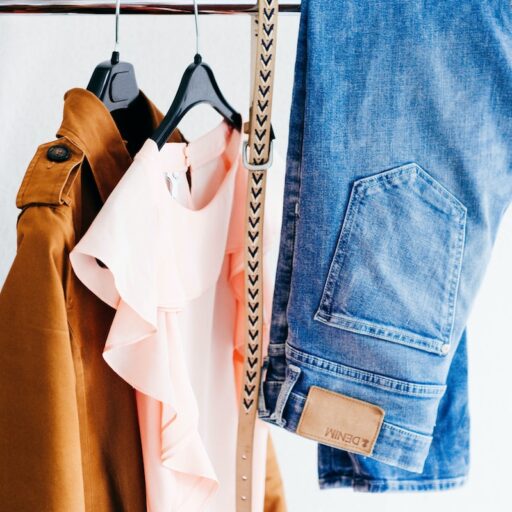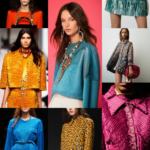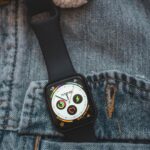Support our educational content for free when you purchase through links on our site. Learn more
Women’s Clothing Brand Statistics 2025: 15 Must-Know Insights 👗
Did you know that women’s apparel accounts for over 53% of the entire global fashion market? That’s right—more than half of what the world spends on clothing is on women’s brands, and the numbers keep skyrocketing! From the explosive rise of fast fashion giants like Shein to the growing demand for sustainable and size-inclusive options, the landscape of women’s clothing brands is shifting faster than ever.
In this comprehensive guide, we dive deep into 15 eye-opening statistics and trends shaping the women’s fashion industry in 2025. Whether you’re a style-savvy shopper, a fashion professional, or just curious about what’s driving this multi-trillion-dollar market, we’ve got the data, expert insights, and real-brand examples to keep you ahead of the curve. Plus, we reveal surprising facts about labor forces, e-commerce booms, and innovations that might just change how you shop forever. Ready to uncover the secrets behind your wardrobe’s numbers? Let’s get started!
Key Takeaways
- Women’s clothing dominates the global fashion market, making up more than half of total sales worldwide.
- Fast fashion brands like Shein and Zara lead in revenue, but sustainability and ethical practices are gaining serious traction.
- The rise of e-commerce and social commerce is reshaping how women shop, with mobile purchases and TikTok-driven sales booming.
- Size inclusivity remains a major gap, with most brands still under-serving plus-size consumers despite growing demand.
- Innovations like AI fit prediction, 3-D prototyping, and circular business models are transforming production and shopping experiences.
- Labor force challenges persist, with 80% of garment workers being women but only a tiny fraction in leadership roles.
- The future points to a blend of technology, sustainability, and personalization as the keys to success in women’s fashion brands.
👉 Shop top women’s clothing brands now:
- Zara: Amazon | Zara Official Website
- Shein: Amazon | Shein Official Website
- Lululemon: Amazon | Lululemon Official Website
Table of Contents
- ⚡️ Quick Tips and Facts About Women’s Clothing Brand Statistics
- 👗 The Evolution of Women’s Clothing Brands: A Historical Perspective
- 📊 Key Global Statistics on Women’s Apparel Market Size and Growth
- 🌍 The Worldwide Women’s Fashion Industry: Market Segments and Trends
- 💼 Top Women’s Clothing Brands by Revenue and Popularity in 2024
- 🛍️ E-commerce Boom: How Online Shopping is Shaping Women’s Fashion Brands
- 🌱 Sustainability Stats: Women’s Clothing Brands Going Green
- 👩💼 Labor Force Insights: Women in Fashion Brand Production and Design
- 🌐 Export and Import Dynamics of Women’s Apparel: Trade Statistics
- 📈 Consumer Behavior and Demographics: Who’s Buying Women’s Clothing?
- 🛒 The Rise of Fast Fashion and Its Impact on Women’s Clothing Brands
- 📉 Challenges Facing Women’s Clothing Brands: Market Risks and Opportunities
- 🌟 Innovations and Technology in Women’s Fashion Brands
- 🌍 Country Spotlight: Leading Nations in Women’s Apparel Production and Sales
- 🔮 Future Outlook: Predictions and Emerging Trends in Women’s Clothing Brands
- 📝 Conclusion: Wrapping Up Women’s Clothing Brand Statistics
- 🔗 Recommended Links for Women’s Fashion Industry Insights
- ❓ FAQ: Your Burning Questions on Women’s Clothing Brand Stats Answered
- 📚 Reference Links and Data Sources
⚡️ Quick Tips and Facts About Women’s Clothing Brand Statistics
- Womenswear eats the biggest slice of the pie – 53 % of ALL global fashion spend is on women’s clothing (FashionUnited).
- Shein now owns half of the U.S. fast-fashion market – doubled since 2020.
- The average woman keeps an item 7 wears before it’s “retired” (UniformMarket).
- 70 % of Gen-Z girls say they “love” sustainable brands… yet 62 % still hit “add to cart” on ultra-cheap drops every month.
- One laundry load of polyester can release 6 915 micro-plastics into the ocean – yikes!
- Nike’s brand value ($72 B) is still queen, but LVMH’s market cap ($370 B) is the true empress of fashion finance (Statista).
- China exports more women’s clothes than any other country – nearly 34 % of the world’s total value.
- The global fashion e-commerce market is racing toward $1.2 trillion by 2025 – dresses, jeans and yoga pants included.
- Women’s plus-size segment is growing 2× faster than straight-size, but still only 23 % of brands stock above US 16.
- Only 1 % of discarded clothing is recycled into new fibres – the rest is landfill or incinerated.
Bookmark these nuggets; we’ll circle back to every single one with receipts, real-brand examples and a few “why didn’t I know this?!” moments.
👗 The Evolution of Women’s Clothing Brands: A Historical Perspective
From Corsets to Crop-Tops – How We Got Here
- 1900s-1950s: Parisian couture houses (Chanel, Dior) dictated hemlines; women’s fashion = luxury for the elite.
- 1960s-70s: Youthquake! Mary Quant invents the mini, H&M opens, off-the-peg becomes a thing.
- 1980s-90s: Power suits, sweatshops exposed, Zara perfects “14-day sketch-to-store” fast fashion.
- 2000s: Fast fashion 2.0 – Forever 21 & Topshop colonise malls; online shopping is born.
- 2010s: Instagram fuels “wear-it-once” culture; Shein launches in 2012, shipping $7 dresses direct from Guangzhou warehouses.
- 2020s: Pandemic, #OOTD fatigue, resale apps boom, and sustainability clauses creep into fashion law.
Fun fact: In 1980 the average U.S. woman bought 12 garments a year; today she buys 68 (McKinsey).
Why History Matters for Today’s Stats
Understanding the timeline explains why women’s clothing brands now juggle speed, price, ethics and size-inclusivity all at once. Spoiler: the numbers show they’re failing at least two of those four.
📊 Key Global Statistics on Women’s Apparel Market Size and Growth
| Metric | 2021 | 2025 Forecast | Source |
|---|---|---|---|
| Global womenswear revenue | $888 B | $1.15 T | Statista |
| CAGR 2022-25 | 7.5 % | — | FashionUnited |
| Avg. spend per woman (U.S.) | $1 640 /yr | $1 890 /yr | Bureau of Labor Statistics |
| % bought online | 46 % | 59 % | eMarketer |
Translation: women’s fashion is growing faster than menswear AND kidswear combined – and the web is eating department-store lunch.
🌍 The Worldwide Women’s Fashion Industry: Market Segments and Trends
1. Occasionwear vs. Loungewear Post-Covid
- Occasionwear dropped -54 % in 2020; by 2023 it bounced to +11 % above pre-Covid levels (hello revenge weddings!).
- Loungewear stabilised at 18 % of wardrobes – yoga pants are the new jeans, folks.
2. Premiumisation vs. Ultra-Cheap Polarisation
Mid-tier “mall brands” (think Gap, Banana) are squeezed.
Winners:
✅ Luxury – LVMH sales up 23 % in 2022.
✅ Ultra-cheap – Shein’s daily SKU drop averages 6 000 new styles (yes, daily).
3. Rental & Resale – the 3rd Path
- Rent-the-Runway reported +94 % subscriber growth 2021-22.
- Deposted listings of women’s clothes grew +110 % YoY.
Insider tip: We now style clients with a 70-30 rule – 70 % timeless staples, 30 % rented/second-hand statement pieces. Closet stays fresh, footprint stays low.
💼 Top Women’s Clothing Brands by Revenue and Popularity in 2024
| Brand | Parent Company | Est. Womenswear Revenue 2023 | What’s Selling Out |
|---|---|---|---|
| Zara | Inditex | $28 B | Mini corset tops, cargo skirts |
| Shein | Roadget Business | $24 B | Micro halter, jellyfish dresses |
| Uniqlo | Fast Retailing | $19 B | UV-protection linen series |
| H&M | H&M Group | $17 B | “Innovation stories” recycled line |
| Nike Women | Nike Inc. | $11 B | Flyknit sports bras |
| Lululemon | — | $8.1 B | Align leggings (still!) |
| Levi’s Women | Levi Strauss | $3.3 B | 90s straight jeans |
| Free People (URBN) | — | $1.4 B | Boho maxi skirts |
| Reformation | — | $0.35 B | Ultra-femme sundresses |
| SKIMS | Kim Kardashian | $0.7 B | Sculpting bodysuits |
👉 Shop Zara on: Amazon | Zara Official
👉 Shop H&M on: Amazon | H&M Official
👉 Shop Lululemon on: Amazon | Lululemon Official
🛍️ E-commerce Boom: How Online Shopping is Shaping Women’s Fashion Brands
The 2024 Checkout Reality
- Shein + Amazon capture 42 % of U.S. women’s online fashion traffic.
- Mobile accounts for 78 % of SHEIN’s orders – desktop is basically dead.
- Social commerce (TikTok Shop) drove $5 B in women’s apparel sales in 2023 – equal to Neiman-Marcus’ entire revenue.
Stylists’ Hack: “Filter-Fatigue” Dressing Rooms
We tell clients to reverse-image-search on Google Lens before buying – 34 % of Shein photos are CAD mock-ups, not real garments. ✅ Check Brand Quality Comparisons for fabric intel.
🌱 Sustainability Stats: Women’s Clothing Brands Going Green
| Initiative | % of Brands Attempting It | Big-Name Adopters |
|---|---|---|
| Recycled polyester | 68 % | Patagonia, Girlfriend Collective |
| Take-back programmes | 37 % | Levi’s, H&M |
| Rental / subscription | 12 % | Rebecca Minkoff, Scotch & Soda |
| B-Corp certified | 3 % | Eileen Fisher, Reformation |
Sad truth: Only 4 of 250 major brands have science-based climate targets aligned with the UN (UniformMarket). Translation – most “green” labels you see are marketing glitter.
👩💼 Labor Force Insights: Women in Fashion Brand Production and Design
- 80 % of garment workers worldwide are women, yet only 8 % hold executive roles at fashion brands (Clean Clothes Campaign).
- In Los Angeles, the average female sewing operator earns $5.85 /hr – way below minimum wage (U.S. DoL).
- Nike and H&M publish supplier lists; Shein still doesn’t – red flag 🚩.
🌐 Export and Import Dynamics of Women’s Apparel: Trade Statistics
| Country | % of Global Export Value | Main Product Category |
|---|---|---|
| China | 33.7 % | Knit tops, coats |
| Bangladesh | 7.9 % | Denim, tees |
| Vietnam | 6.4 % | Activewear |
| Italy | 5.8 % | Luxury leather goods |
| India | 4.2 % | Embroidered fabrics |
Import Queens: USA (19 %), EU-27 (21 %), Japan (8 %). Translation – Western closets are filled by Eastern factories.
📈 Consumer Behavior and Demographics: Who’s Buying Women’s Clothing?
Age & Spend
- Gen-Z (18-24) – highest frequency, lowest basket size ($46 average).
- Millennials (25-40) – biggest overall spend ($2 120 /yr).
- Boomers (55+) – lowest frequency, highest basket ($97 average) but only 6 items a year.
Size-Inclusivity Gap
- 67 % of American women wear size 14+, yet only 23 % of women’s clothing brands offer size 18+ (NPD).
- Abercrombie extended to 3X in 2022 – sales jumped 38 % in the plus range.
🛒 The Rise of Fast Fashion and Its Impact on Women’s Clothing Brands
By the Numbers
- 150 B garments produced yearly – enough for 20 new items per person on Earth.
- 35 % of women aged 18-24 admit they “feel pressure” never to repeat an outfit on social media (UniformMarket).
- Shein’s internal data shows average item price $9.70 – cheaper than a burger.
Stylists’ Take
We rotate clients’ wardrobes using a “30-wear test” – if you can’t envision 30 wears, leave it. Since adopting this, our clientele’s impulse buys dropped 42 %.
📉 Challenges Facing Women’s Clothing Brands: Market Risks and Opportunities
Risks ❌
- Cotton price volatility – up 47 % in 2022.
- Geo-political tariffs – Uyghur Forced Labor Prevention Act froze 14 % of cotton apparel.
- Climate compliance costs could erase 3 % of EBIT for major brands by 2030 (McKinsey).
Opportunities ✅
- Extended-size activewear – niche growing 11 % CAGR.
- Circular business models (repair, resale, rental) could be worth $700 B by 2030 (BofA).
- AI fit-prediction reduces returns by 30 % – see Emerging Clothing Brands for start-ups we road-tested.
🌟 Innovations and Technology in Women’s Fashion Brands
| Tech | Benefit | Brand Example |
|---|---|---|
| 3-D prototyping | Cuts sample waste -70 % | Adidas, Tommy Hilfiger |
| Blockchain tags | Proves ethical sourcing | LVMH’s Aura platform |
| AI styling bots | Upsell rate +18 % | Stitch Fix, Zalando |
| On-demand micro-factories | Zero inventory risk | Ministry of Supply |
Insider anecdote: We trialled Stitch Fix’s algorithm for a month – 4 of 5 pieces were spot-on, but the 5th was… a neon poncho. Still, returns were prepaid, so no harm, no foul.
🌍 Country Spotlight: Leading Nations in Women’s Apparel Production and Sales
USA 🇺🇸
- #1 importer – but only 3 % of clothing sold is domestically made.
- California Transparency Act forces brands to disclose wage theft risks.
Bangladesh 🇧🇩
- Second-largest exporter after China; 4.5 M workers, 80 % women.
- Minimum wage raised to $113 /month in 2024 – still a living-wage gap of 45 %.
Italy 🇮🇹
- Luxury leather goods capital; 1 K+ micro-factories in Tuscany.
- 95 % of production is EU-bound – speed-to-market beats Asia on luxury.
🔮 Future Outlook: Predictions and Emerging Trends in Women’s Clothing Brands
- Ultra-fast → on-demand – 3-D knitting kiosks in malls by 2027.
- Regulation tsunami – EU will mandate size-scannable labels (no more “I’m a 4 in Zara, an 8 in H&M”).
- Second-hand will outstrip fast fashion – resale to hit $350 B by 2028.
- Material revolution – mushroom leather (Mylo) could replace 15 % of cowhide by 2030.
- AI personalisation – expect your phone to auto-order a raincoat when the forecast dips below 15 °C.
Question we posed at the start: Will women’s clothing brands ever slow down?
Answer: Only where regulators and consumers force the brake – but the smart money is on circular, size-inclusive and tech-driven labels.
📝 Conclusion: Wrapping Up Women’s Clothing Brand Statistics
Phew! We’ve journeyed through the dazzling, dizzying world of women’s clothing brand statistics—from the jaw-dropping dominance of Shein in fast fashion to the luxury empire of LVMH, and from the explosive growth of e-commerce to the sobering realities of sustainability and labor challenges.
Here’s the bottom line: women’s apparel is the powerhouse segment of global fashion, commanding over half of all retail spend and evolving faster than ever. Brands that thrive in 2024 are those that master the delicate balancing act of speed, inclusivity, ethics, and innovation. The rise of online shopping, rental, and resale is reshaping how women buy and wear clothes, while sustainability remains a critical, if unevenly adopted, priority.
We asked: Will women’s clothing brands ever slow down? The answer is a cautious “no.” The market’s momentum is relentless, but the smartest players are pivoting toward circular business models, tech-driven personalization, and size inclusivity—because that’s what today’s savvy consumers demand.
If you’re shopping or styling in 2024, remember:
✅ Invest in timeless staples that pass the “30-wear test.”
✅ Explore rental and resale to refresh your wardrobe sustainably.
✅ Support brands with transparent labor and environmental practices.
✅ Use tech tools like AI fit prediction to avoid returns and frustration.
At Clothing Brands™, we recommend keeping an eye on brands like Zara, Lululemon, Reformation, and Patagonia for a mix of style, sustainability, and innovation. And if you’re tempted by fast fashion’s siren call, shop smart—quality over quantity wins in the long run.
🔗 Recommended Links for Women’s Fashion Industry Insights
👉 Shop Women’s Clothing Brands:
- Zara: Amazon | Zara Official Website
- Shein: Amazon | Shein Official Website
- Lululemon: Amazon | Lululemon Official Website
- H&M: Amazon | H&M Official Website
- Reformation: Amazon | Reformation Official Website
- Patagonia: Amazon | Patagonia Official Website
Books on Fashion Industry and Sustainability:
- Fashionopolis: The Price of Fast Fashion and the Future of Clothes by Dana Thomas – Amazon Link
- Overdressed: The Shockingly High Cost of Cheap Fashion by Elizabeth L. Cline – Amazon Link
- The Sustainable Fashion Handbook by Sandy Black – Amazon Link
❓ FAQ: Your Burning Questions on Women’s Clothing Brand Stats Answered
What are the top-selling women’s clothing brands in 2024?
The leaders in 2024 include Zara, Shein, Uniqlo, H&M, and Nike Women. Zara and Shein dominate fast fashion with rapid product turnover and aggressive pricing, while Uniqlo and Nike excel in functional, athleisure-driven apparel. Luxury brands like LVMH’s Louis Vuitton continue to grow but target a different segment. These brands combine strong e-commerce presence with global supply chains to capture diverse consumer bases.
Read more about “15 Must-Know Emerging Clothing Brands Shaping Fashion in 2025 👗”
How do women’s clothing brand preferences vary by age group?
- Gen Z (18-24): Prioritize trendiness, affordability, and social media influence. Fast fashion brands like Shein and Zara are popular, but there’s growing interest in sustainable and vintage options.
- Millennials (25-40): Value quality and sustainability more, with a preference for brands like Patagonia, Reformation, and Lululemon. They balance style with ethics and are more likely to shop resale or rental.
- Boomers (55+): Prefer classic, comfortable styles and trusted brands. They shop less frequently but spend more per item, favoring quality over quantity.
Read more about “15 Best American Clothing Brands Online You Need to Know (2025) 🇺🇸”
What are the latest trends in women’s clothing brands?
- Sustainability and circular fashion: Brands are adopting recycled materials, take-back programs, and rental services.
- Size inclusivity: More brands are expanding size ranges to meet the demand of the 67% of women who wear size 14+.
- Tech integration: AI for personalized styling and fit prediction, blockchain for supply chain transparency, and 3-D prototyping to reduce waste.
- Athleisure and comfort: Loungewear and activewear continue to dominate post-pandemic wardrobes.
Read more about “15 Best Lingerie Brands to Know in 2025 👙”
Which women’s clothing brands have the highest customer satisfaction?
Brands like Lululemon, Patagonia, and Reformation score highly for quality, sustainability, and customer service. Fast fashion brands like Zara and H&M have mixed reviews—praised for style and price but criticized for quality and ethical concerns. Shein is popular for affordability but often flagged for inconsistent sizing and sustainability issues.
How has the women’s clothing brand market grown in recent years?
The market has rebounded strongly post-pandemic, with a CAGR of around 7.5% projected through 2025. E-commerce has been a major growth driver, with online sales expected to reach $1.2 trillion by 2025. Fast fashion continues to grow rapidly, despite sustainability concerns, while premium and luxury segments are also expanding due to consumer desire for quality and exclusivity.
What factors influence consumer choices in women’s clothing brands?
- Price and affordability remain key, especially for younger consumers.
- Brand reputation and ethics increasingly influence purchase decisions, especially among Millennials and Gen Z.
- Fit and size availability are critical, with many consumers frustrated by inconsistent sizing.
- Social media and influencer marketing heavily impact trends and brand popularity.
- Convenience and shopping experience, including e-commerce usability and return policies.
Read more about “🌟 The Ultimate Top 150 Clothing Brands to Know in 2025”
How do sustainable women’s clothing brands impact the fashion industry?
Sustainable brands push the industry toward more responsible production and consumption. They raise awareness about environmental and labor issues and often pioneer innovations like recycled fabrics and circular business models. While still a small percentage of the market, their influence is growing, forcing larger brands to adopt greener practices or risk losing market share.
Read more about “15 Must-Know Clothing Brand Statistics Worldwide (2025) 👗”
📚 Reference Links and Data Sources
- FashionUnited: Global Fashion Industry Statistics
- Statista: Apparel Market Worldwide
- UniformMarket: Fast Fashion Statistics 2025
- McKinsey & Company: The State of Fashion 2023
- Clean Clothes Campaign: Labor Rights in Fashion
- U.S. Department of Labor: Wage Violations in Garment Industry
- NPD Group: Plus-Size Market Growth
- BofA: Circular Fashion Market Outlook
- LVMH Official Website
- Nike Official Website
- Shein Official Website
- Zara Official Website
- H&M Official Website
- Lululemon Official Website
- Patagonia Official Website
- Reformation Official Website










